Archive for October, 2022
A big one: Forecasting future volcanic eruptions
It may erupt suddenly and violently terrorizing the town nearby, setting forth panic and destruction.
It might slowly ooze. And another volcano might lay dormant for several more years – centuries even. It’s nearly impossible to predict.
That is one of the goals of Dr. Gary Michelfelder’s research.
For the last 15 years, Michelfelder, associate professor of geology at Missouri State University, has studied the Rio Grande Rift and the Andes Mountains in Chile. He studies magma, volcanoes and the Earth’s crust to learn more about how and why volcanoes erupt to improve forecasting.
He’s also fascinated by the landscape and what ripple effects these eruptions cause.
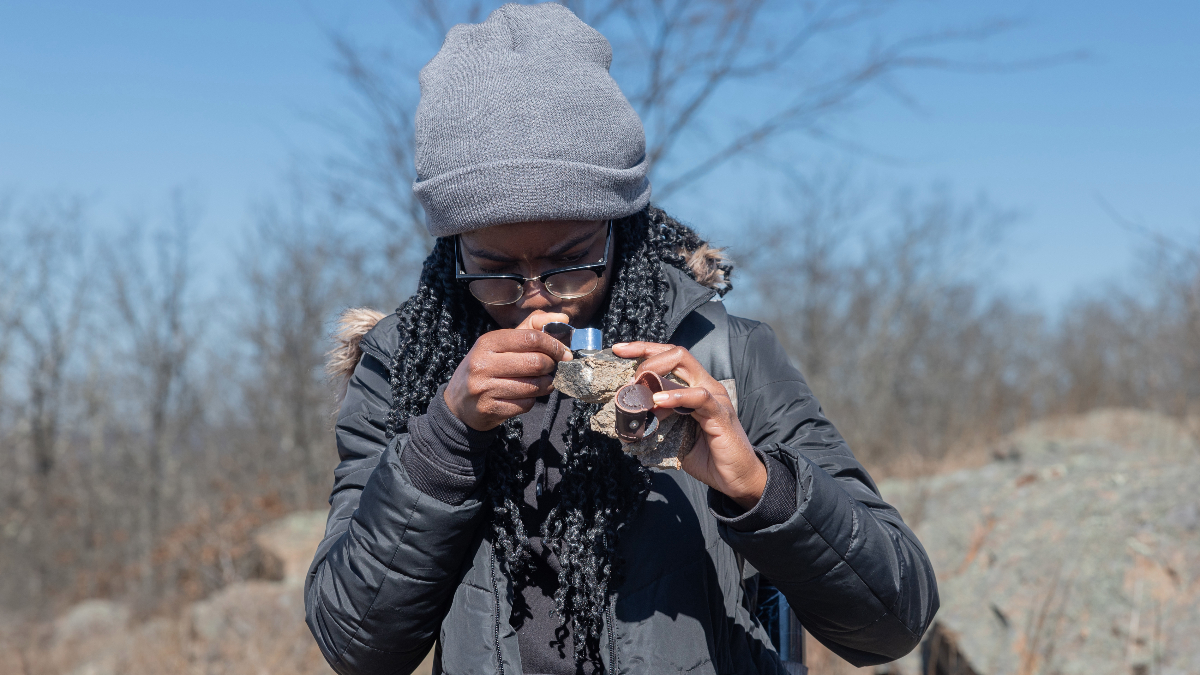
Student Oluchi Nweke examines a rock with a hand lens during a field trip to the St. Francois mountains in southeastern Missouri.
What do the rocks tell us?
While you may never see lava firsthand, it changes the atmosphere and our world.
As lava cools, it becomes igneous rock, which preserves the history of the eruptions.
“I mainly look at volcanic systems as snapshots in time to record the continental crust,” Michelfelder said.
These magmatic systems – each unique in physical stature and behavior – damage and disrupt more than the terrain.
“I was lucky enough to get to go to a conference in Japan that just happened to coincide with the volcano erupting.“
According to Michelfelder, the gases emitted can change climates or reduce agricultural yields.
“These studies give us insight into understanding our planet,” he said. “We can see why life is here compared to maybe life on another planet, or maybe lack of life in another climate.”

Being outdoors is the best way to learn about the phenomena Dr. Gary Michelfelder studies. Here, student Carl York consults Michelfelder about a finding.
Struck by the geology bug
From a kid who participated in geography quiz bowls, to a young Army soldier stationed in New Mexico, Michelfelder has always wondered why.
“Why are we sitting in this big flat, open area? How is there a 10,000-foot mountain just a mile away?” he said. “It pushed me to understand the landscape around me.”
As his career in the National Guard and in academia grew, so did his ability to satisfy his curiosity. He has produced more than 20 publications in the last decade.
His current quest is to unveil the mysteries of magma. The National Science Foundation awarded more than $230,000 in funding for this latest research endeavor.
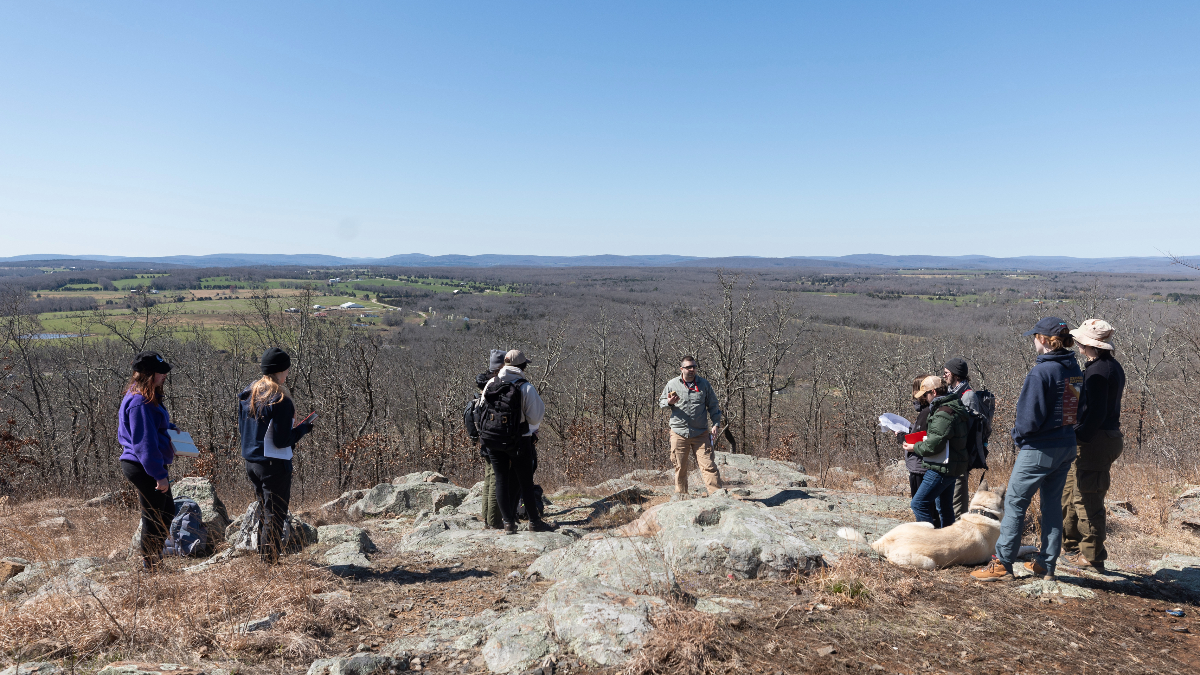
In April 2022, Dr. Gary Michelfelder took student geologists to the St. Francois Mountains to study the formations.
For scope, the Central Andes has at least 15 volcanoes the size of Yellowstone National Park. He is looking at an arc of volcanoes that reside atop a regional magma body. It is a reservoir roughly the size of Missouri.
Michelfelder and his research team, which includes graduate students and collaborators across the globe, are trying to understand if this magma body feeds all the volcanoes. They also want to know:
- How volcanoes accumulate the magma.
- How long the magma stays in one location.
- If the reservoir causes powerful eruptions.
“We want to understand the volcanoes in the Andes today versus one million, two million or three million years ago,” he said. “We’re recording the temperature, the pressure and composition of the magma. Then we ask, ‘is it staying the same for each volcano? Is it changing within a stage of a volcano?’”
Dr. Frank Ramos, Johnson Chair of Geochemistry at New Mexico State University, mentored Michelfelder when he was pursuing his degrees. He’s been impressed with Michelfedler’s ability to involve students throughout the research process.
“Gary does a great job integrating master student research projects into excellent publications that have significant scientific contributions to our field,” Ramos said.
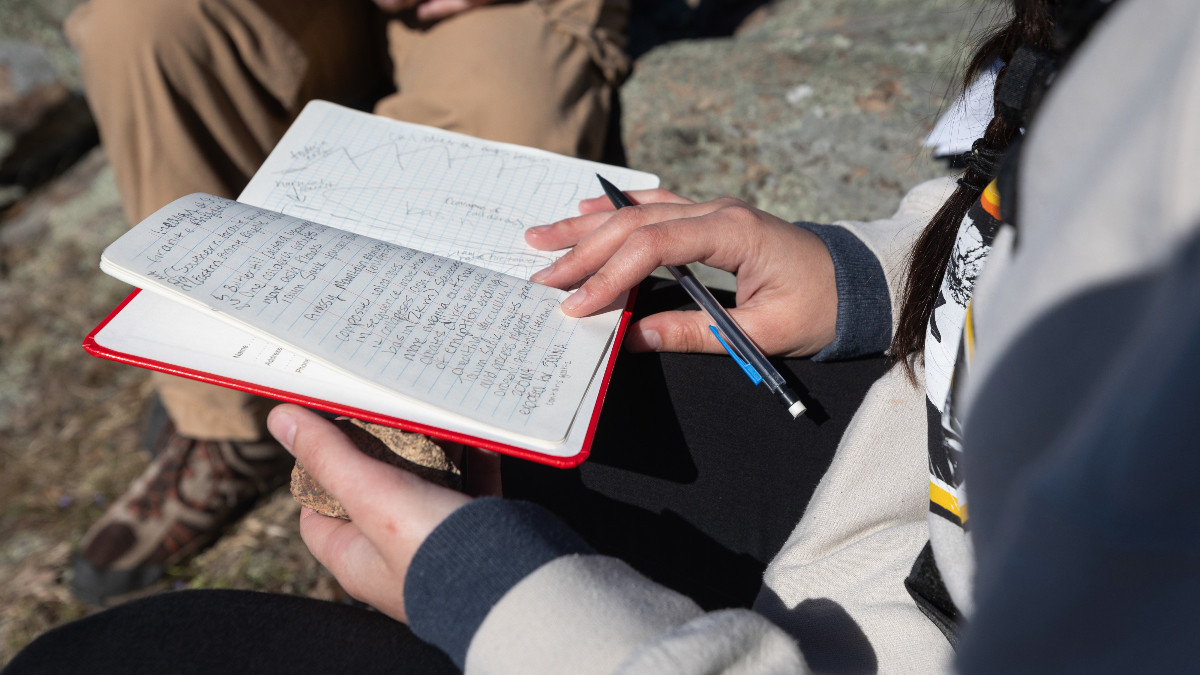
Each research excursion is ripe for new learning opportunities.
Studying the crystallized minerals
To find the answers they seek, Michelfelder employs many methods. One of them is analyzing the rocks.
He says you can learn a lot by bringing rock samples back to the lab. The team crushes the rock, dissolves it and analyzes the chemical composition.
“Even though the volcano may not look like a volcano anymore, and it may not be erupting currently, it is an active and dangerous environment. Every volcano is its own animal, so to speak, and it behaves differently every time it erupts.”
These rocks also are enriching teaching tools in his classes, Michelfelder noted.
Using a mass spectrometer, his team tests individual mineral grains. This technique uses a laser to discern the chemistry.
They work with Dr. Lawrence Horkely, a professor at the University of Iowa, to date the rock samples using highly sensitive equipment, which allows for precision in dating eruptions. It also can help identify how long the rock was in the magma chamber prior to erupting.
“It’s powerful to put together a detailed history of what a mineral experienced from the time that it was formed as magma, to the time it erupted at the surface,” he added.
Prior to COVID-19, Michelfelder started incorporating new technology into the project. He took student researchers to Chile to fly drones into the crater of the volcanoes to map the plans for the project.
Due to COVID-19- related travel restrictions, this became impossible. Instead, Michelfelder partnered with Dr. Felipe Aguilera, the director of the Central Andes Volcano Observatory, to gain data from his drone work.
“He takes gas measurements to help us with the volcanic hazards component of our projects,” Michelfelder said. “Our team will be able to explain what triggers the eruptions. His drone data will help us to understand the actual eruption.”
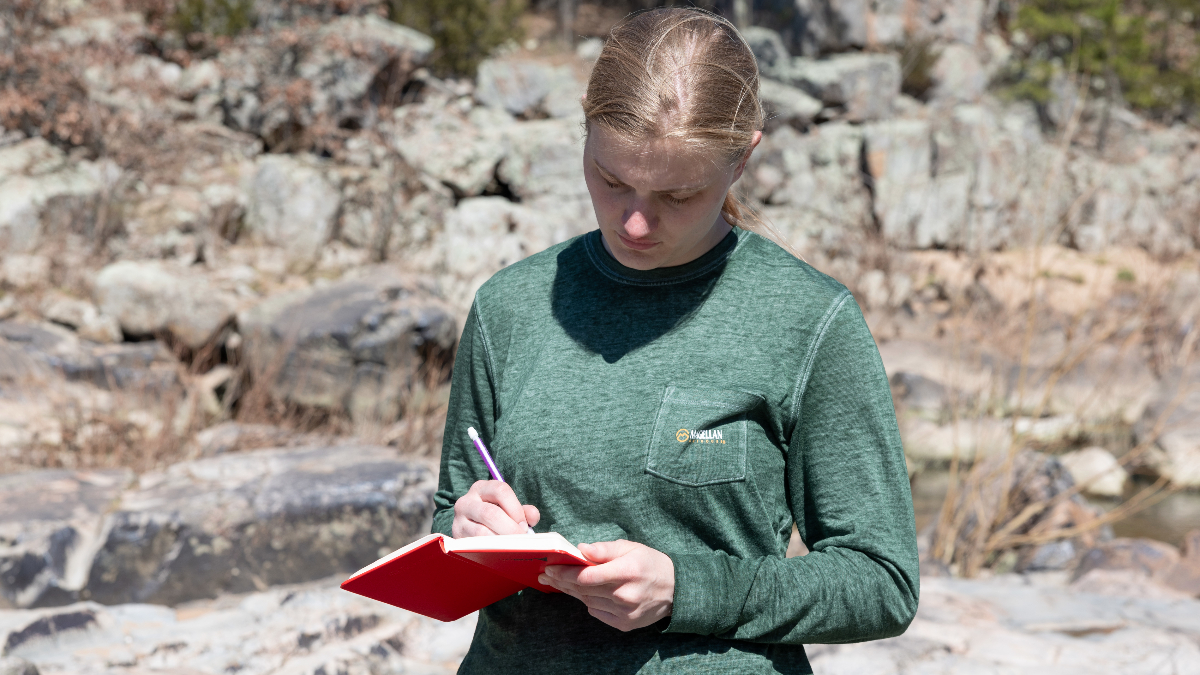
Surrounded by the beauty of the outdoors, student Sarah Peterson takes notes on the geology of the mountains.
Magma on the move
By investigating all these factors, Michelfelder and his team hope to better forecast the level of devastation to expect out of future eruptions.
At the site in the Andes, the team’s findings reveal the magma isn’t staying in any of the stages long before moving.
“We thought it might be residing for a hundred thousand years or more. Instead, the initial conclusion from evaluating the first two volcanoes is that it’s an ever-changing system,” he said.
What’s the downside of this early finding?
“We don’t have the long history of what’s going on there to be able to forecast what might happen in the future. Every eruption’s been different. It makes it difficult to say, ‘this is what this volcano will behave like in the future.’”
Difficult, yes. Worthy of continued research? According to Michelfelder, “absolutely.”
Further reading
- Story by Nicki Donnelson
- Photos by Jesse Scheve
- Video by Chris Nagle and Megan Swift
From the ground up: Nutrition starts with soil
Soils can be enriched with nutrients to grow strong, healthy grass for livestock to consume. Many of the nutrients transfer to your plate when you eat meat, or the fruits, vegetables and grains harvested.
Dr. Melissa Bledsoe, associate professor in the Darr College of Agriculture at Missouri State University, has conducted many research projects focused on the chemistry and nutrition in soil.
“I’ve always loved plants. My father worked for John Deere, so agriculture was part of our family.”
In recent years, the agriculture community has emphasized the importance of testing soil composition then improving the chemistry. Farmers may do this by adding nutrients to the soil or to the solution that waters the field.
“Not only can you grow more food, but it’ll be healthier. And in turn, you might not have to add supplements to your cattle’s food,” Bledsoe, a plant physiologist, said. “By investing a little bit more in your soil, you can get a better benefit.”
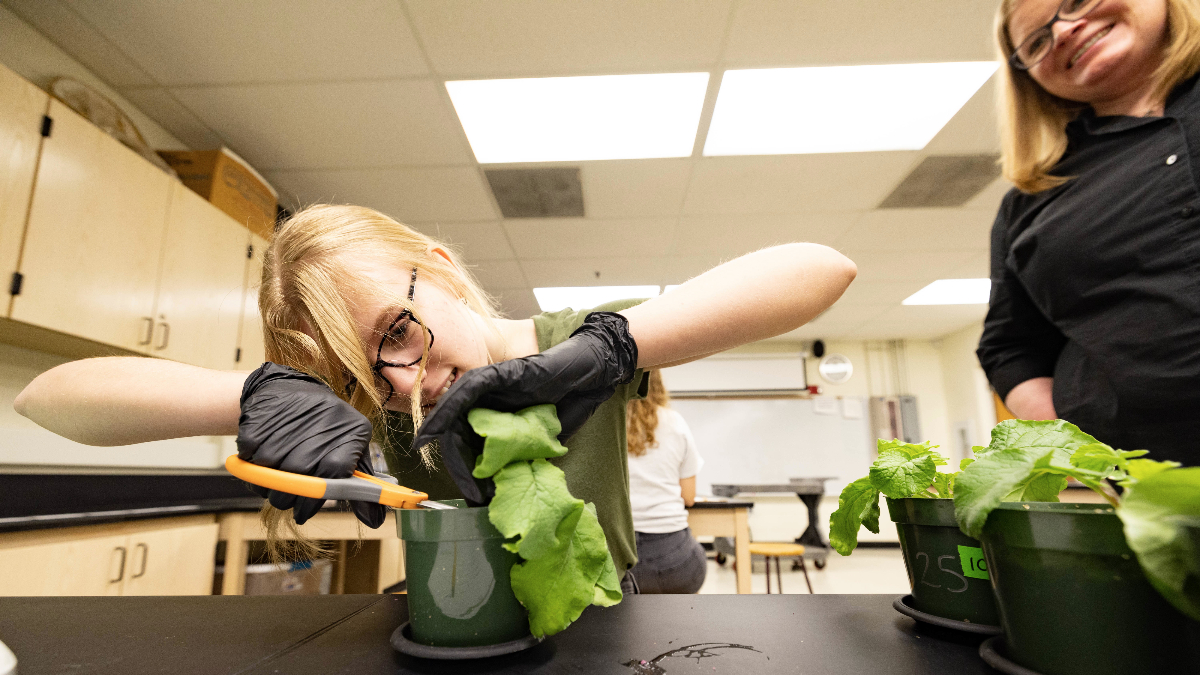
Horticulture student Gwenyth McClain works under Dr. Melissa Bledsoe, learning to test soils and plant tissue.
In Karls Hall at MSU, Bledsoe teaches her students to test soils and plant tissue. These tests can show how soils need to be adapted to meet the goals for the crop.
Bledsoe integrates research into her teaching, and she values building projects around her students’ interests and questions.
She relates this back to her own experience as a graduate student studying under Provost Dr. Frank Einhellig. He inspired her to dig deeper into research and ultimately pursue her doctoral degree.
A finding about phosphorus
Grass tetany, a fatal disorder in cattle, is related to low magnesium in a cow’s diet.
In previous work, Bledsoe and colleagues found soil must have adequate phosphorus levels for magnesium to reach the leaves of tall fescue.
“The Ozarks has acidic soils, which means our phosphorus levels are low,” she explained. “Grass tetany is more of an issue in our tall fescue pastures than in many other places.”
This led to another study, and another publication in 2019. This time, the team focused on other common crops, such as winter wheat, oats and cereal rye.
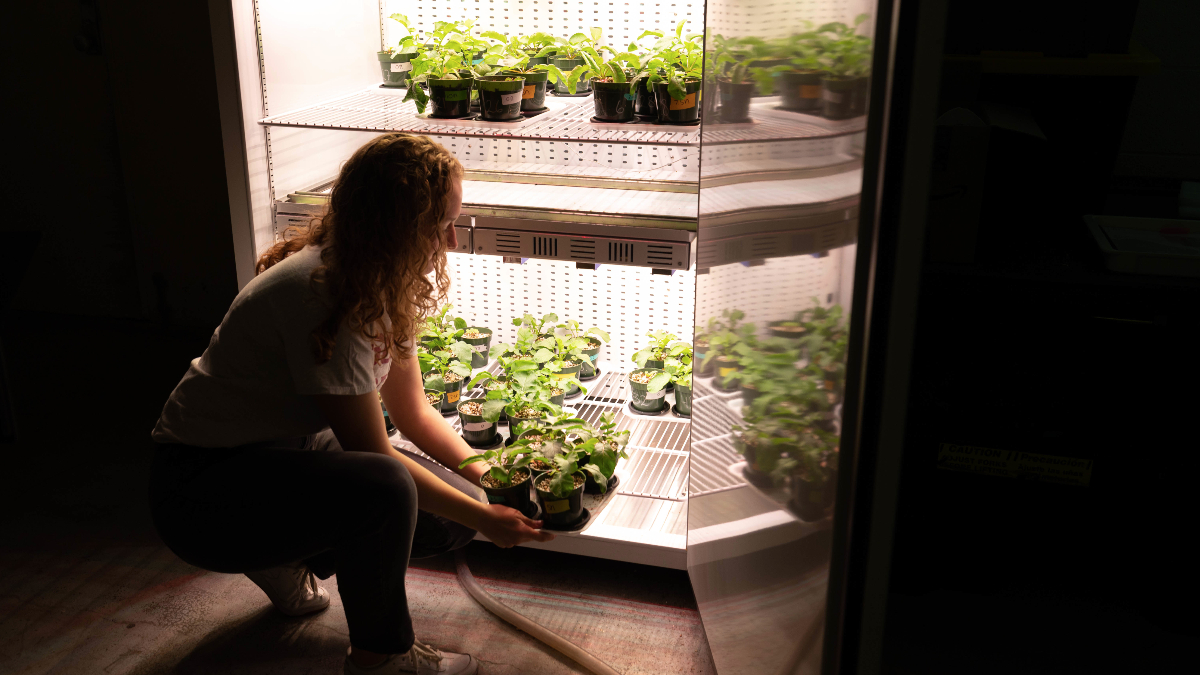
Students are an integral part of Dr. Melissa Bledsoe’s lab.
Starting small, her students set up the experiment in hydroponics. This allowed them “to manipulate the mineral nutrition very specifically to see how the plant responds.”
Then, they expanded the study to the field, hoping to zero in on how adding phosphorus to the soil affected the magnesium in the winter plants.
“Our abilities are flexible. So when a student says, ‘I’m really interested in growing vegetables,’ we think about a way we can solve a question about that.”
While winter wheat was responsive to the addition, the other winter annuals were not.
Though the study didn’t indicate that there were benefits for the other winter annuals, Bledsoe spins it positively.
“Even finding that some plants don’t respond is still an answer,” she said, noting that it’s a learning opportunity for students. “It gives them a reason to continue testing the techniques with other variables, too.”
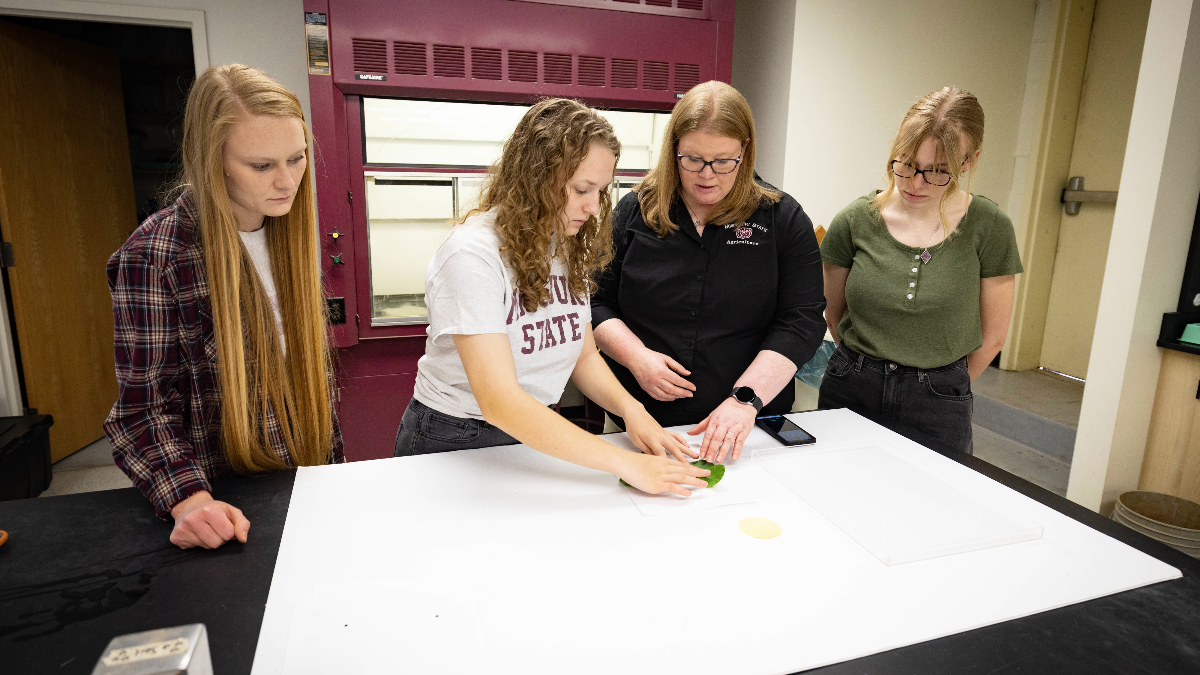
Students Mary Books, Sarah Overbeck and Gwenyth McClain work to gain greater understanding of how to improve crop production.
Establishing a silvopasture
At Journagan Ranch, a Missouri State property in Mountain Grove, Missouri, Bledsoe has worked alongside Drs. Michael Goerndt, William McClain and Toby Dogwiler on a major U.S. Department of Agriculture grant project since 2018.
Here they have established a silvopasture to study.
In simpler terms, a silvopasture means you’re optimizing land to grow trees and grass together in a way that benefits both to get higher yields.
“We want to grow forages for grazing cattle in this area. If we can grow forages under trees, we can get a second crop with trees,” Bledsoe said. “Meanwhile, we’re providing shade and cooler temperatures for the cattle.”
It takes a long time to establish these plots before they are producing at full capacity, Bledsoe stressed. All along the way, the team monitors and measures tree health, soil nutrition and forage growth for baseline data.
“We can map the area but also monitor how those trees are growing, how the grasses are growing and see what stresses they’re under. Ultimately, over time, we can also monitor production and growth with drone flights, and we’ll have on the ground measurements to compare that to.”
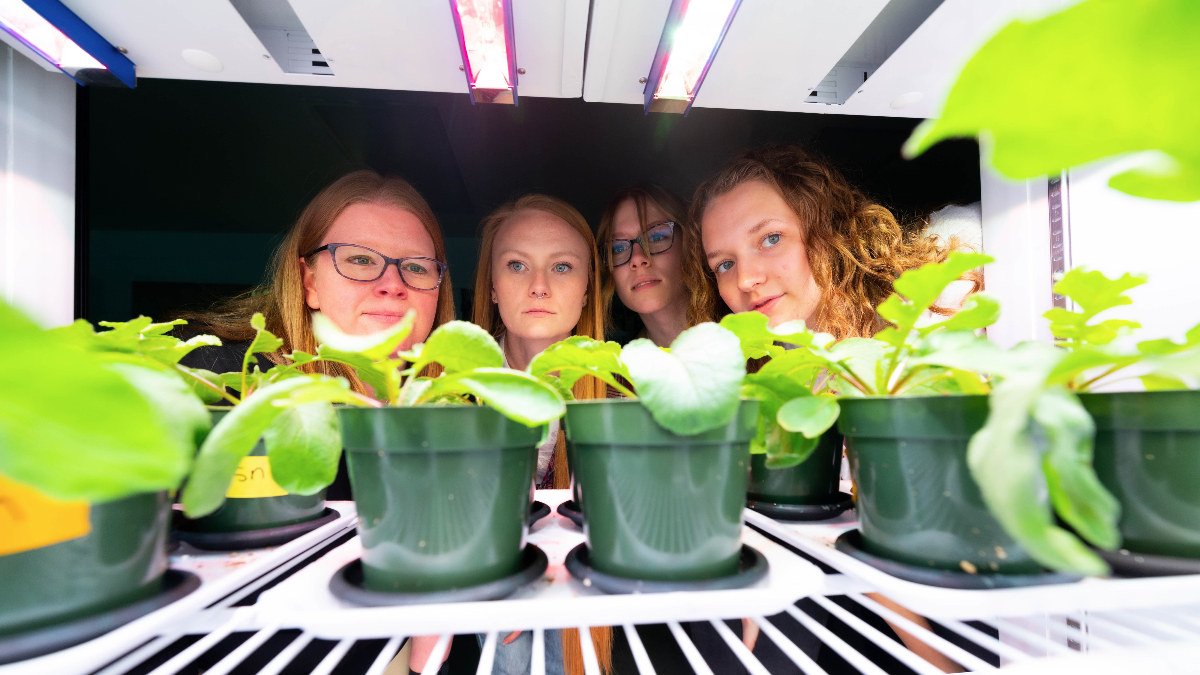
In Dr. Melissa Bledsoe’s lab, she uses growth chambers to ensure stability of variables.
As the roots deepen and the trees thrust upward, the team will continue to track at periodic tipping points throughout the year:
- At the end of winter, before the plants bud and leaf again.
- After stress from a drought.
- Before the leaves wither and fall.
Learn more about the silvopasture project
“We want to prove how a silvopasture system can benefit a producer and how these systems might help the trees and forages be healthier,” she said.
Helping farmers
In her role, Bledsoe mentors students in agronomy and horticulture. Her interest in soil health and nutrition serves as a springboard for a broad range of students to jump into research, she noted.
“We have students that range from horticulture to agronomy and we want to have all those students be interested in research.”
Her projects dig in many different directions – garlic, microgreens, and fescue to name a few. At the root of each, she sees a commonality.
“We’re trying to help local producers have healthier soils and healthier forage production, so they can have fewer issues with their cattle,” Bledsoe said. “For me, I love working on real world problems that can alleviate the pressure on these producers.”
- Story by Nicki Donnelson
- Photos by Kevin White
- Video by Chris Nagle and Megan Swift

